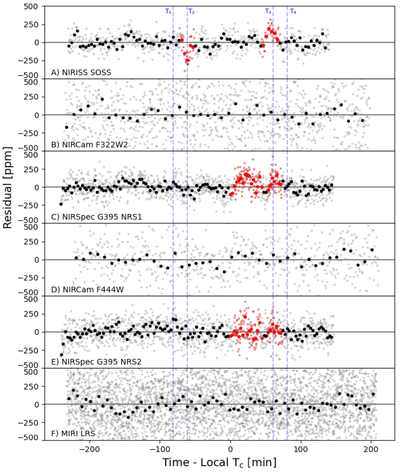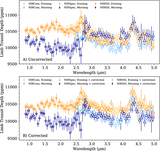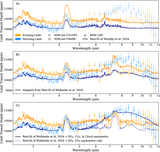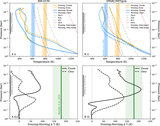Image Details

Caption: Figure 3.
Data–model residuals from fitting the broadband transit light curves of each instrument’s observation of WASP-107 b. Each time series is aligned relative to its local time of conjunction using the ephemeris of M. M. Murphy et al. (2024b). We binned the SOSS, F322W2, NRS1, F444W, NRS2, and MIRI light curves into 2.2, 3.4, 0.9, 7.0, 0.9, and 0.7 minute bins, respectively, so that all time series shown have similar scatter of ∼75 ppm. Binned data are in black, and the unbinned data are in gray. The vertical blue dashed lines mark the four approximate transit contact points for reference. We see potential starspot crossings, marked in red, during the NIRISS SOSS visit (panel (A)) and the NIRSpec G395H visit (panels (C) and (E), which are simultaneous observations in two bands). We do not see evidence for spot crossings during either of the NIRCam or MIRI visits.
Copyright and Terms & Conditions
© 2025. The Author(s). Published by the American Astronomical Society.












